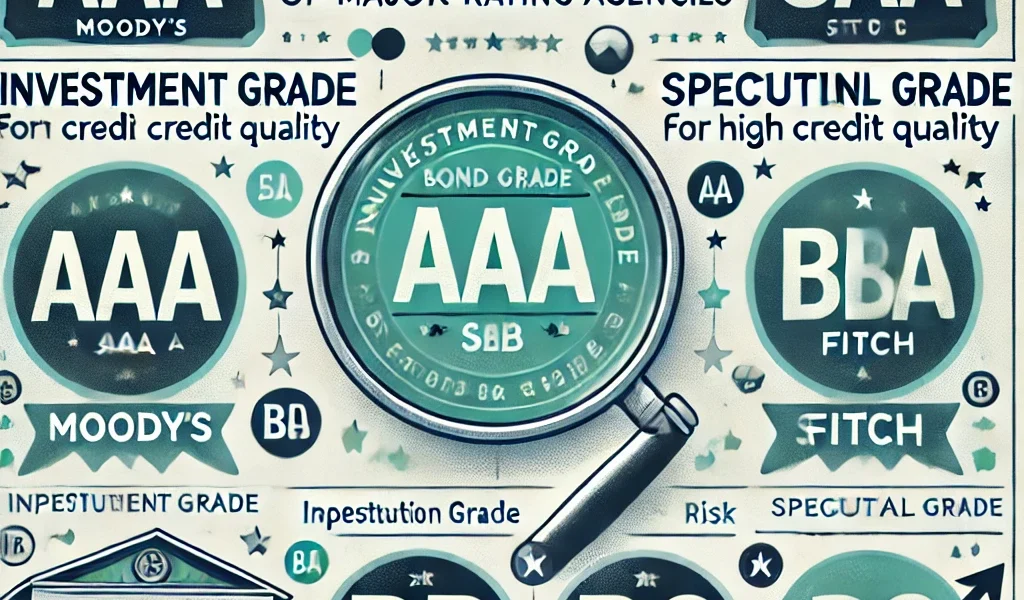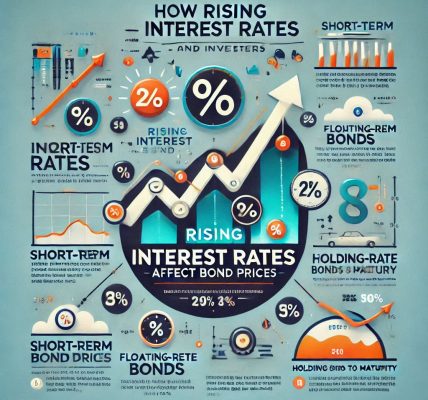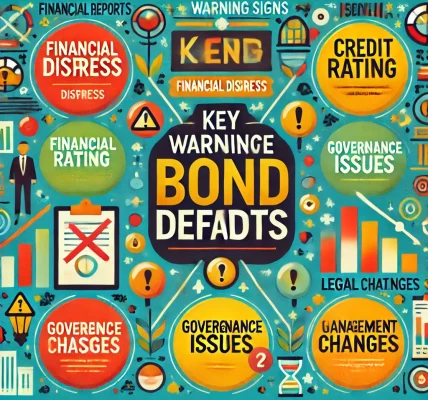When it comes to investing in bonds, understanding bond ratings is crucial for making informed decisions. Bond ratings provide a clear indication of the creditworthiness of a bond issuer, helping investors gauge the risk level and potential return on their investment. Whether you’re a seasoned investor or new to the world of fixed-income securities, knowing how to interpret bond ratings can protect your capital and enhance your portfolio’s performance.
In this comprehensive guide, we’ll explore what bond ratings are, how they impact your investments, and why they matter in your financial strategy.
What Are Bond Ratings?
Bond ratings are evaluations provided by credit rating agencies to assess the likelihood that a bond issuer will meet their financial obligations—namely, paying interest on time and returning the principal amount upon maturity. These ratings act as a measure of risk and help investors decide which bonds align with their risk tolerance and financial goals.
Key Credit Rating Agencies
Three major credit rating agencies dominate the market:
- Moody’s Investors Service
- Standard & Poor’s (S&P) Global Ratings
- Fitch Ratings
Each agency uses a slightly different scale, but all provide similar insights into the bond’s risk profile.
Understanding Bond Rating Scales
Bond ratings are typically categorized into two broad groups: Investment Grade and Speculative (or Junk) Grade.
| Rating Agency | Investment Grade (Low Risk) | Speculative Grade (High Risk) |
|---|---|---|
| Moody’s | Aaa (Highest Quality) to Baa3 | Ba1 to C (Substantial Risk to Default) |
| S&P | AAA (Highest Quality) to BBB- | BB+ to D (High Risk and Default Likely) |
| Fitch | AAA (Highest Quality) to BBB- | BB+ to D (Highly Speculative to Default) |
Investment Grade Bonds
These bonds are issued by entities with a low risk of default, making them a safer option for conservative investors.
Examples:
- U.S. Treasury Bonds (AAA)
- Corporate Bonds from blue-chip companies (AA or A)
Speculative or Junk Bonds
These bonds come with higher default risks but offer higher yields to compensate investors. They are typically issued by companies or governments facing financial challenges.
Examples:
- High-Yield Corporate Bonds (BB or lower)
- Emerging Market Bonds
Why Do Bond Ratings Matter for Investors?
Understanding bond ratings helps you make better investment decisions. Here’s why they are essential:
1. Assessing Credit Risk
Bond ratings reflect the probability that an issuer will repay their debt. Higher-rated bonds (AAA or Aaa) are safer, while lower-rated bonds (BB or Ba) come with greater risk.
Example: A bond rated AAA is considered virtually risk-free, while a CCC-rated bond carries a high likelihood of default.
2. Evaluating Investment Returns
Generally, higher risk equals higher returns. Investors seeking stability prefer investment-grade bonds, while those willing to take risks for better returns might invest in speculative bonds.
Example: A BBB-rated corporate bond may yield 4%, while a BB-rated bond could yield 7%.
3. Portfolio Diversification
By mixing bonds with different ratings, you can balance risk and return. For instance, combining government bonds with high-yield corporate bonds provides stability and growth potential.
4. Market Liquidity
Highly-rated bonds are easier to sell in the secondary market due to higher investor demand, whereas lower-rated bonds may face liquidity challenges.
Factors Influencing Bond Ratings
Credit rating agencies analyze several factors before assigning a bond rating:
- Issuer’s Financial Health: Profitability, cash flow, and balance sheet strength.
- Economic Conditions: Market trends, inflation, and interest rate environment.
- Industry Outlook: Performance and risks within the issuer’s industry.
- Management Quality: The issuer’s leadership and operational effectiveness.
- Debt Levels: Existing debt obligations and ability to service them.
The Impact of Bond Downgrades and Upgrades
Bond ratings are not static—they can be revised based on changing conditions.
Bond Downgrade
When a bond is downgraded, it signifies a higher risk of default. This can lead to:
- Price Decline: Lower ratings decrease a bond’s market value.
- Higher Yields: Issuers must offer higher interest rates to attract buyers.
- Reduced Liquidity: Lower-rated bonds become harder to sell.
Example: In 2020, several corporate bonds faced downgrades due to pandemic-related financial strain.
Bond Upgrade
An upgrade suggests improved creditworthiness, resulting in:
- Price Appreciation: Bonds with higher ratings become more valuable.
- Lower Yields: Issuers pay lower interest rates on upgraded bonds.
- Increased Demand: More investors seek upgraded bonds for their portfolios.
How to Use Bond Ratings in Your Investment Strategy
- Conservative Investors: Stick to AAA or AA-rated bonds for safety and predictable income.
- Balanced Investors: Combine investment-grade and high-yield bonds to blend safety with better returns.
- Aggressive Investors: Explore speculative bonds for higher yields but prepare for increased risk.
Example Portfolio Allocation
- Conservative: 70% Government Bonds, 30% Corporate Bonds (AA-rated or better)
- Balanced: 50% Government Bonds, 30% Corporate Bonds, 20% High-Yield Bonds
- Aggressive: 30% Government Bonds, 40% Corporate Bonds, 30% High-Yield Bonds
Legal Considerations When Investing in Bonds
- Regulatory Compliance: Ensure bond issuers comply with local and international regulations (e.g., SEC guidelines in the U.S.).
- Disclosure Requirements: Review official bond prospectuses for financial health and risk disclosures.
- Tax Implications: Understand the tax treatment of interest income from corporate vs. government bonds.
- Due Diligence: Rely on reputable rating agencies and verify information before investing.
Conclusion
Understanding bond ratings is key to making informed investment decisions. These ratings provide a snapshot of an issuer’s creditworthiness, helping you evaluate risk and potential returns. By incorporating both investment-grade and speculative bonds in your portfolio, you can strike a balance between safety and yield.
Whether you seek stability through government bonds or higher returns via corporate bonds, paying attention to bond ratings ensures that you invest wisely and protect your capital.
Always consult a qualified financial advisor before making significant investment decisions to align with your unique financial goals and risk tolerance.




